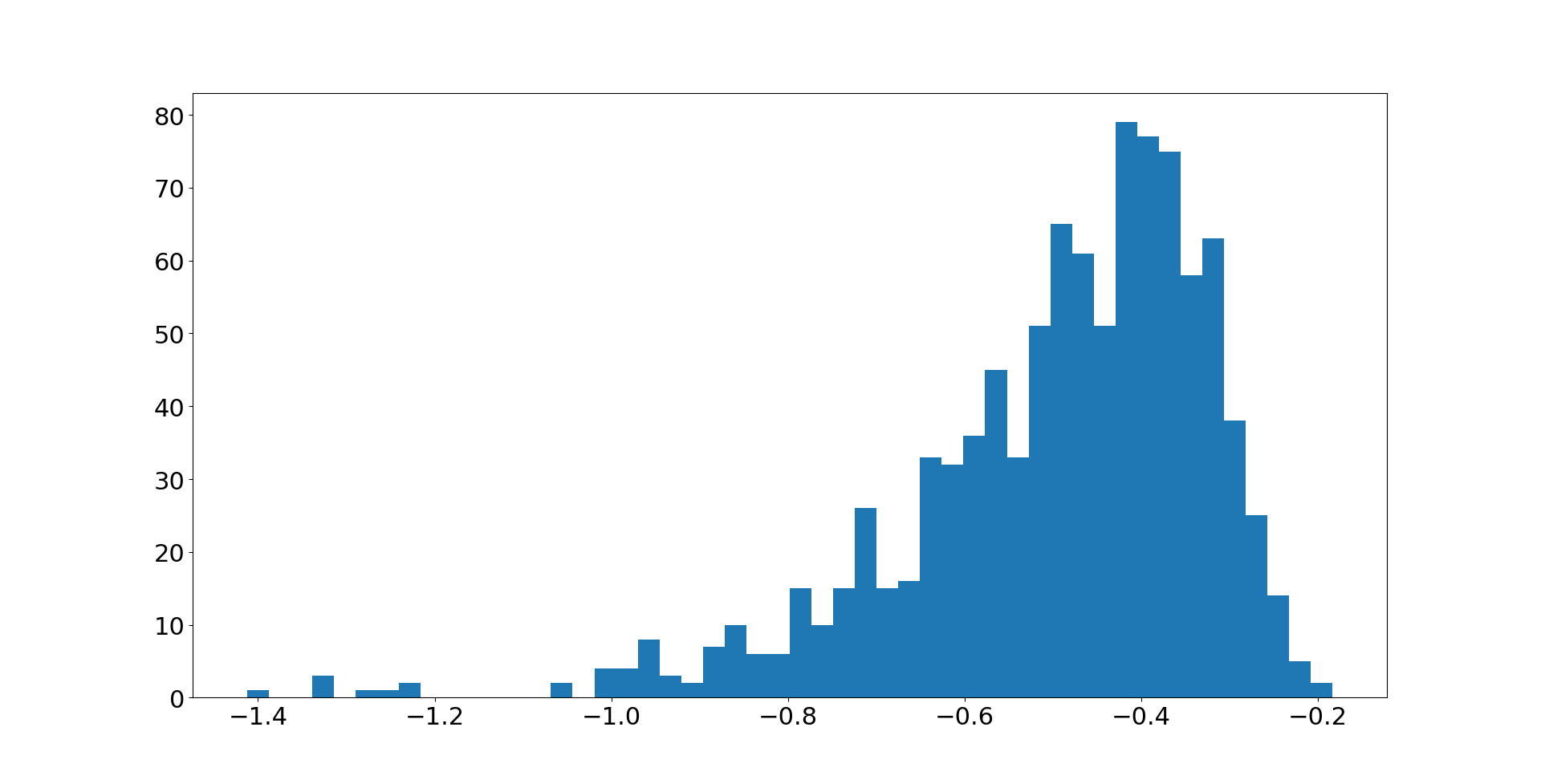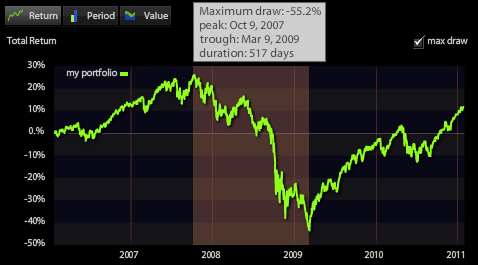

Thus, Sharpe ratio is an often cited metric, though I do not like it too much because you are penalized for out-sized positive returns while I would only define negative returns as risk. Large returns generally come at larger risk. Never forget about risk-reward, risk-adjusted return, that is all that matters in this game. Never look at just one metric is I guess all I want to say. It hurts to see wealth vanish by max draw down figures at the initiation of the strategy (then it comes down to the confidence you place in the strategy and your back tested results) but it would matter a lot less if your annualized returns are predicted to be a multiple of the draw down figure with fast recovery. I could not care less if I made a 100% annualized return over several years with max draw downs of 20% if such draw downs are quickly recovered. However, if it can be shown that the recovery is fast and that draw downs of such magnitude are far in between while the strategy displays strong growth factors then it is not enough to just judge a strategy's performance from draw down figures. Additionally, many who do not manage risk and trade over emphasize draw downs in a way that they look at such draw downs in an isolated fashion: For example, your strategy may show a max draw down of 20% and some cite such figures as way too high to manage institutional funds. A strategy that generally recovers from a max draw down of 10% within days is imho much more favorable than a strategy with a max draw down that, however, takes weeks or months to recover. A very important metric in close combination to draw down is the time it takes to recover from draw downs. There are different definitions out there but the following makes it probably clearer:įollowing up on your subsequent questions: I can most certainly assure you that max draw down alone is not enough to measure risk. Also, generally your max draw down is not a function of your current wealth unless it is a local minimum or similar local minimum metric, according to standard market practice.

Make sure you understand that going practice is that most draw down calculations apply a moving window which means your maximum draw down is a function of the local maximum within the observation window not a global maximum. Thus if you start out with 1 million xyz currency units and suffer a loss on the first trade of 100,000 xyz then you suffered a 10% draw down. Generally draw downs are measured on invested capital not raw pnl. Other assumptions may solve the problem, but arbitrarily different decisions for initial value will lead to different drawdown calculation results.Ī second thought about drawdowns regard their effectiveness do you think that simple variation calculation might give a better insight regarding the strategy's risk? And even then - how would you combine average profit and variance? And how would you calculate the variance - every trade? Every day? Around 0 or around the line connecting the final profit with 0 during the period? Or around the linear regression?Īnd if linear regression is involved - why variance and not, say, standard error? For backtesting purposes, I always assume the net value of the "robot" is 0, and from that point on it makes profits or losses. The problem arises when the first "peak" of the trading strategy is of value 0.

The drawdown (at least according to Wikipedia), saves a peak's value, and for every value later which is lower than the value of the peak, calculated: I am trying to find an indication for risk, something like Sharpe ratio or Sterling ration for that, I thought of using the (maximum) drawdown measurement, but have encountered a problem. I am developing a trading strategy for currencies.


 0 kommentar(er)
0 kommentar(er)
